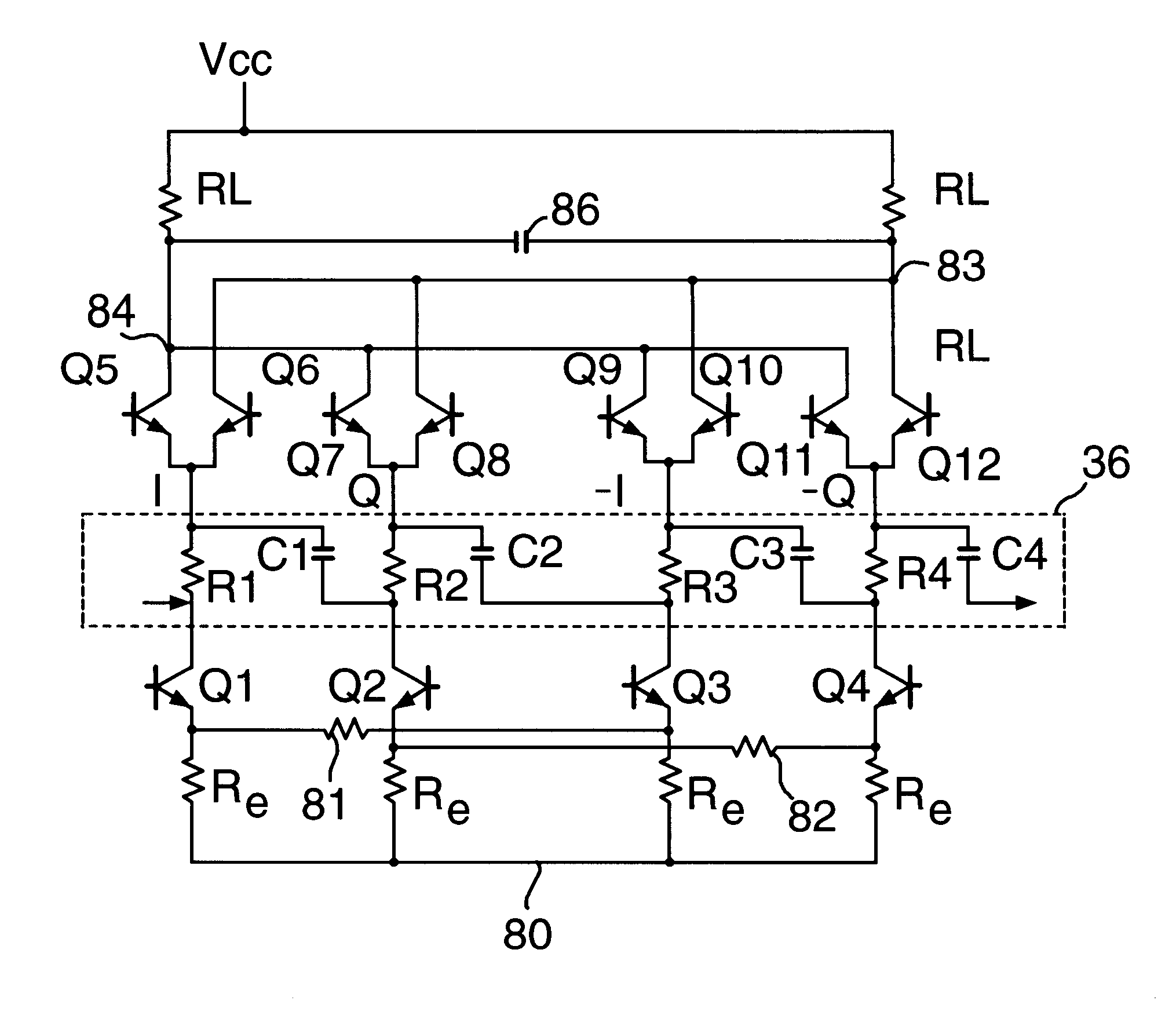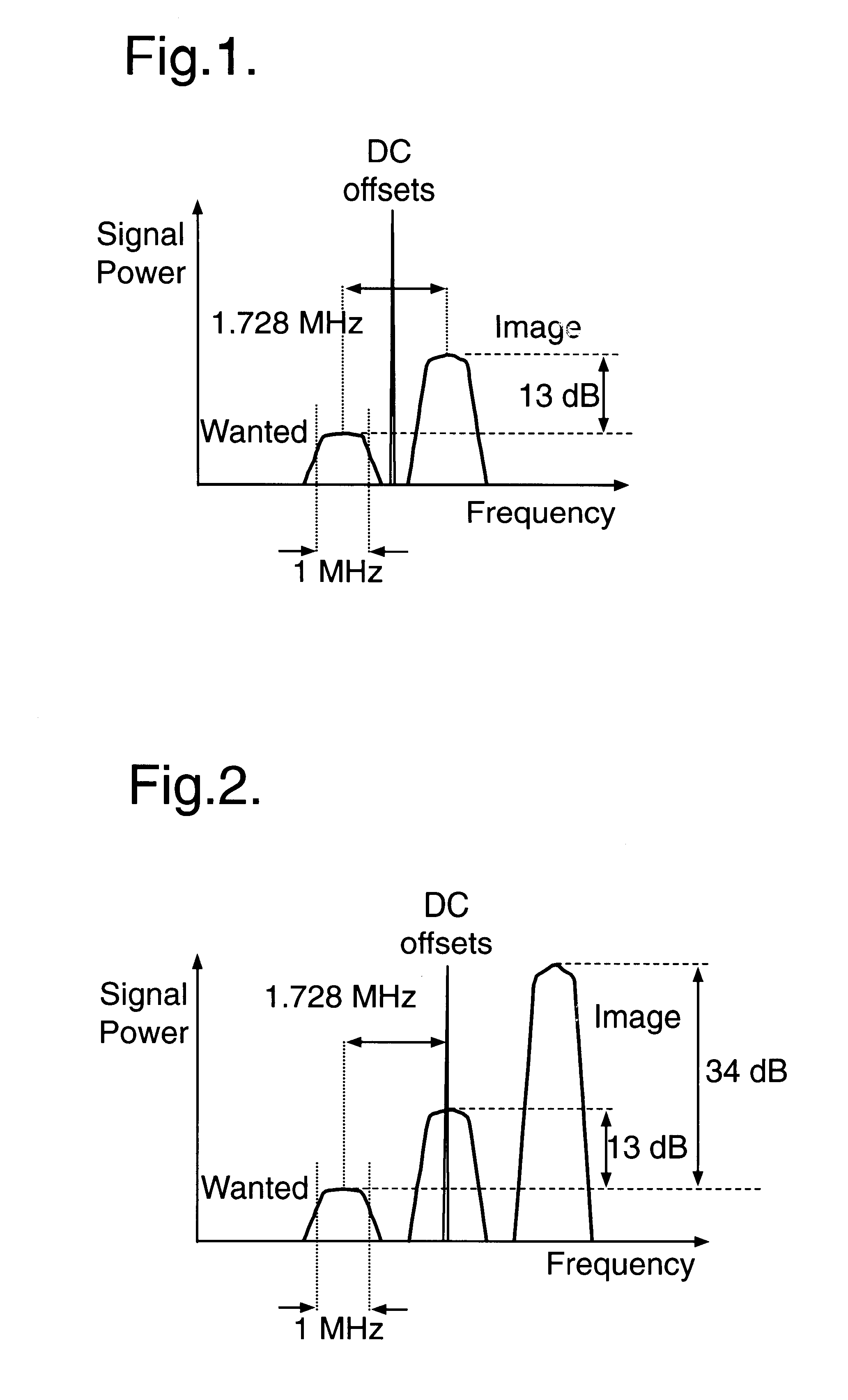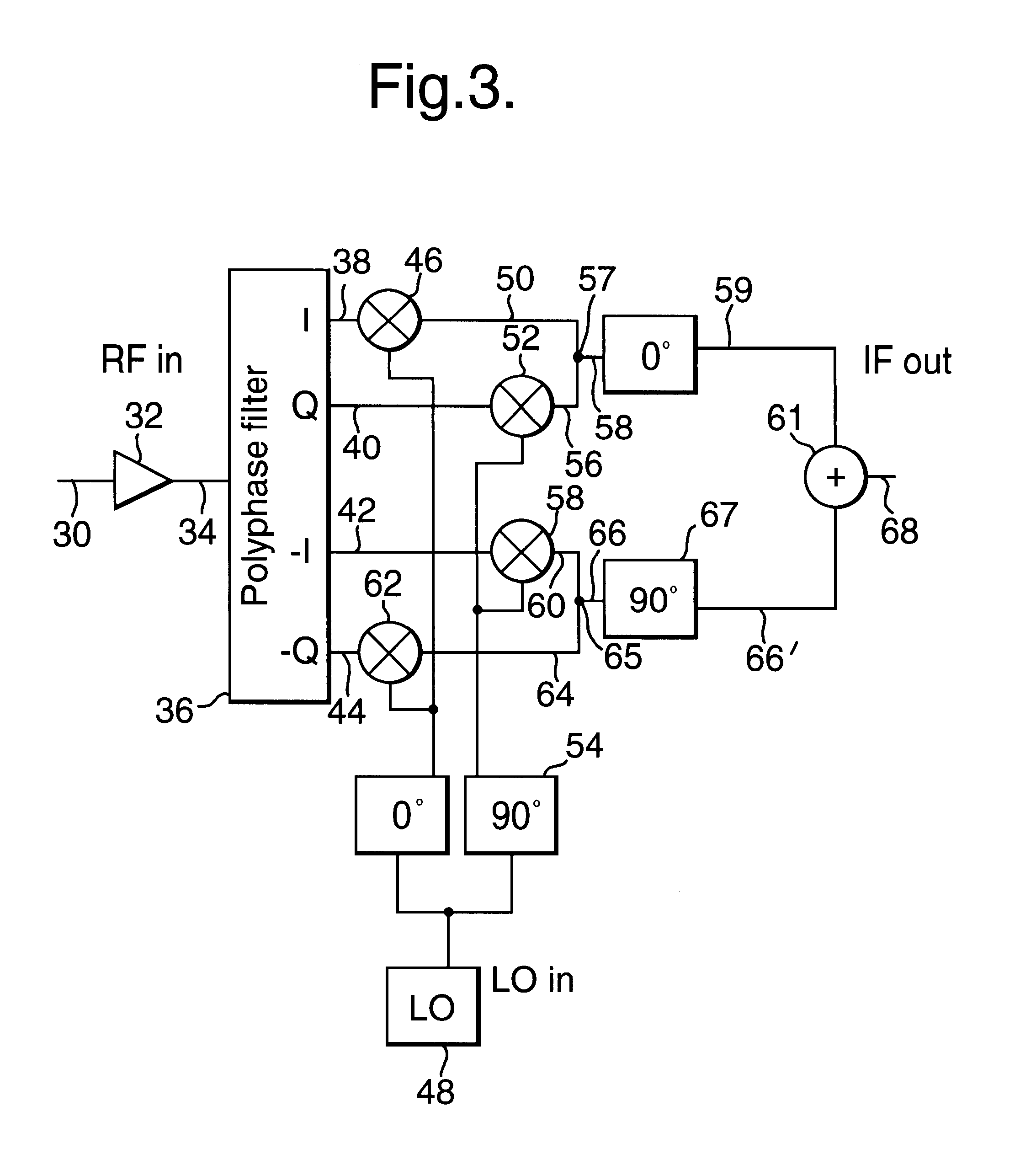Image reject mixer, circuit, and method for image rejection
- Summary
- Abstract
- Description
- Claims
- Application Information
AI Technical Summary
Benefits of technology
Problems solved by technology
Method used
Image
Examples
first embodiment
In the present invention, the image is located in the neighbouring channel through the selection of an intermediate frequency that is one half the channel spacing of the telecommunication system (e.g. in DECT, the IF would therefore be selected as 0.5*1.728 MHz, namely at a frequency of 0.864 MHz). DC offsets then sit in the narrow guard band between the wanted channel and its neighbour. An image rejection of 13 dB then reduces the image to the same level as the wanted signal, although a further margin must be allowed to enable low error detection of the signal; this is generally illustrated in FIG. 1.
second embodiment
In the present invention, the IF is selected such that the image falls in the next but one neighbour, i.e. the IF is selected to have unitary channel spacing from dc (e.g. the IF is 1.728 MHz in DECT). The dc offsets then sit on the neighbouring channel and will be removed by conventional channel filtering. An image rejection of 34 dB reduces the image to the same level as the wanted signal, although a further margin must be allowed to enable low error detection of the signal; this is generally illustrated in FIG. 2.
Selection of a one channel offset from dc for the IF is particularly beneficial in relation to the set-up of the synthesizer since key frequencies are all integer multiples thereof. Moreover, digital signal processing is simplified by virtue of the fact that information is kept relative to the base IF frequency (of 1.728 MHz in the specific example of DECT). Indeed, from a demodulation viewpoint, use of the base frequency allows simple mixing to baseband to be achieved w...
PUM
 Login to View More
Login to View More Abstract
Description
Claims
Application Information
 Login to View More
Login to View More - R&D
- Intellectual Property
- Life Sciences
- Materials
- Tech Scout
- Unparalleled Data Quality
- Higher Quality Content
- 60% Fewer Hallucinations
Browse by: Latest US Patents, China's latest patents, Technical Efficacy Thesaurus, Application Domain, Technology Topic, Popular Technical Reports.
© 2025 PatSnap. All rights reserved.Legal|Privacy policy|Modern Slavery Act Transparency Statement|Sitemap|About US| Contact US: help@patsnap.com



